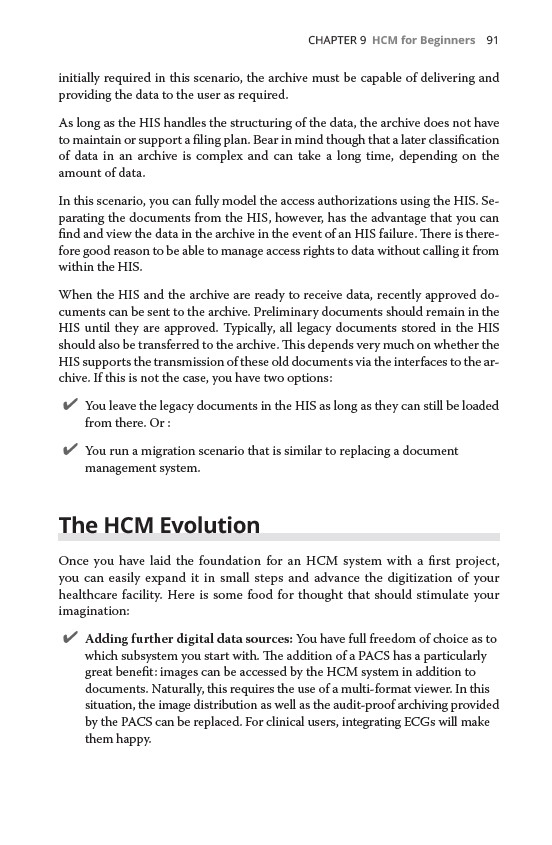
CHAPTER 9 HCM for Beginners 91
initially required in this scenario, the archive must be capable of delivering and
providing the data to the user as required.
As long as the HIS handles the structuring of the data, the archive does not have
to maintain or support a filing plan. Bear in mind though that a later classification
of data in an archive is complex and can take a long time, depending on the
amount of data.
In this scenario, you can fully model the access authorizations using the HIS. Separating
the documents from the HIS, however, has the advantage that you can
find and view the data in the archive in the event of an HIS failure. There is therefore
good reason to be able to manage access rights to data without calling it from
within the HIS.
When the HIS and the archive are ready to receive data, recently approved documents
can be sent to the archive. Preliminary documents should remain in the
HIS until they are approved. Typically, all legacy documents stored in the HIS
should also be transferred to the archive. This depends very much on whether the
HIS supports the transmission of these old documents via the interfaces to the archive.
If this is not the case, you have two options:
✔✔You leave the legacy documents in the HIS as long as they can still be loaded
from there. Or :
✔✔You run a migration scenario that is similar to replacing a document
management
system.
The HCM Evolution
Once you have laid the foundation for an HCM system with a first project,
you can easily expand it in small steps and advance the digitization of your
healthcare facility. Here is some food for thought that should stimulate your
imagination:
✔✔Adding further digital data sources: You have full freedom of choice as to
which subsystem you start with. The addition of a PACS has a particularly
great benefit: images can be accessed by the HCM system in addition to
documents.
Naturally, this requires the use of a multi-format viewer. In this
situation, the image distribution as well as the audit-proof archiving provided
by the PACS can be replaced. For clinical users, integrating ECGs will make
them happy.